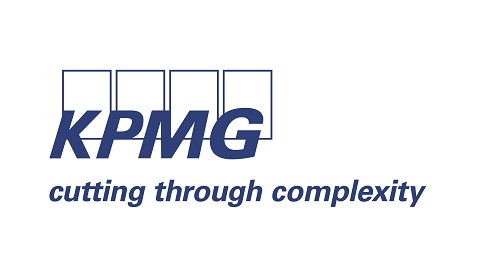KPMG’s Global Economic Outlook forecasts lower global growth prospects and increased inflationary pressures across the world
Geopolitical uncertainty lowering economic growth prospects and increasing inflationary pressures
- • Russia-Ukraine war to lower global growth prospects and increase inflationary pressures
- • Central banks’ change in policy stance could add to markets’ volatility
- • On-going geopolitical uncertainties could see further disruptions to production and trade
KPMG Global Economic Outlook H1’2022
The on-going conflict in Ukraine is set to lower global growth prospects and increase inflationary pressures across the world, according to the latest KPMG Global Economic Outlook.
The bi-annual report provides economic forecasts and analysis from the global organization’s team of economists in territories and regions throughout the world.
The latest edition, covering H1’2022, warns progress on global issues including public health and climate change has slowed as political and business leaders grapple with the broad implications of the war in Ukraine.
While Russia and Ukraine together represent a relatively small part of the world economy, both countries account for a large share of global energy exports, as well as exports of a range of metals, food staples and agricultural inputs. Together, Russia and Ukraine account for almost a third of global wheat exports.
Inflation on a high exacerbates central banks’ dilemma
The global economy emerged from the COVID-19 recession with higher public debt and as central banks raise interest rates, the servicing cost of sovereign debt also increases, making it particularly challenging for emerging countries whose debt is denominated in an appreciating US dollar. With policymakers and many businesses still reeling from the consequences of the pandemic, they are less ready to counter another significant economic shock.
As we continue to emerge from the restrictions imposed by the pandemic, one of the major concerns has been the rise in inflation across many parts of the world. The conflict between Russia and Ukraine has further intensified these pressures. Our analysis found that global inflation could average between 4.5%-7.7% this year and between 2.9%-4.3% in 2023, depending on how the crisis evolves. “The change in central banks’ stance to address rising inflationary pressures, especially the Fed’s, could add volatility to markets as they adjust to a new policy direction. Going forward, the world economy will have to navigate a difficult period ahead under a cloud of geopolitical uncertainty. Businesses and households will be hoping for the best but should plan for potential ongoing disruptions and uncertainty.
Yael Selfin
Chief Economist
KPMG in the UK
Global growth outlook
The outlook for the next two years will depend on how the conflict between Russia and Ukraine evolves. With so much uncertainty at present, KPMG’s Global Economic Outlook has developed three scenarios to examine the prospects for the world economy:
- • The main scenario assumes that world oil prices will be US$30 higher than their path prior to the escalation of the crisis, while gas prices will be 50% higher across Europe. It also incorporates a 5% rise in global food prices.
- • A more severe scenario looks at the potential impact with world oil prices US$40 higher together with a 100% rise in gas prices for Europe and 50% rise in gas prices for the rest of the world. This downside scenario also assumes a 10% rise in global food prices. Both scenarios incorporate a 23% rise in average metal prices and a 4% increase in the cost of agricultural inputs. They also include higher investment risk premia and additional government spending in Europe.
- • The report’s upside scenario looks at the possible outcome should the conflict resolve sooner than anticipated, with prices returning to early February levels and production and trade flows restored.
The report’s analysis found that global GDP growth could range between 3.3%-4% this year and between 2.5%-3.2% in 2023, depending on the scenario. Risks to KPMG’s forecast are currently skewed to the downside. It is possible to envisage that the conflict between Russia and Ukraine escalates beyond the report’s downside scenario, with cuts to energy supplies for example causing a significant disruption to production in parts of Europe. The COVID-19 pandemic is still causing shutdowns in major economies such as China, and a new wave could undo the progress in easing global supply chain blockages.
Before the outbreak of war in Ukraine, different territories and regions were at different stages of their post-COVID-19 economic recovery, and that is reflected in the analysis from our Chief Economists. But, while GDP forecasting varies, there are a number of clear, consistent themes and threats facing the planet. Armed conflict may currently be restricted to Eastern Europe, but it’s already having far-reaching consequences for all nations.
“Supply chain issues have moved from a post-covid issue to a major immediate threat, with potential shortages in natural gas, metals and grains, among many others. While shortages will impact every territory, we anticipate a disproportionate impact on some of the world’s poorest places and people, compounding long-term challenges for the planet’s collective recovery. Meanwhile, inflation looks set to become a major theme for everyone, raising the threat of a worldwide cost-of-living crisis. Economic forecasting is not a perfect science, but what KPMG’s Global Economic Outlook does do is shine a light on the path ahead, providing a degree of guidance in an increasingly difficult journey.
Gary Reader
Global Head of Clients & Markets
KPMG International
To read the Global Economic Outlook in full, go to home.kpmg/globaleconomicoutlook
Source: Press Release

